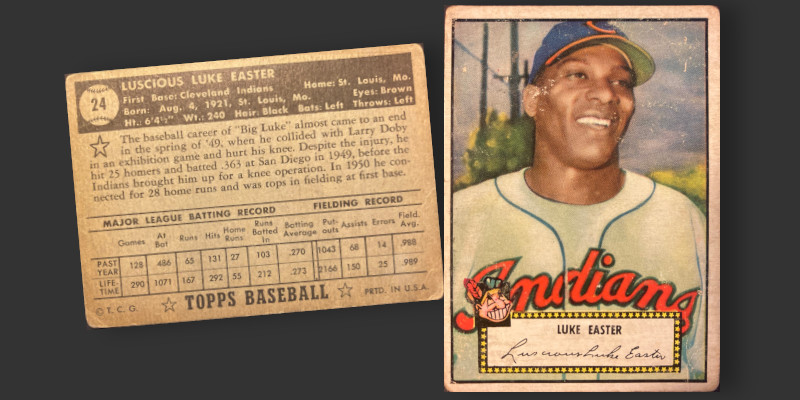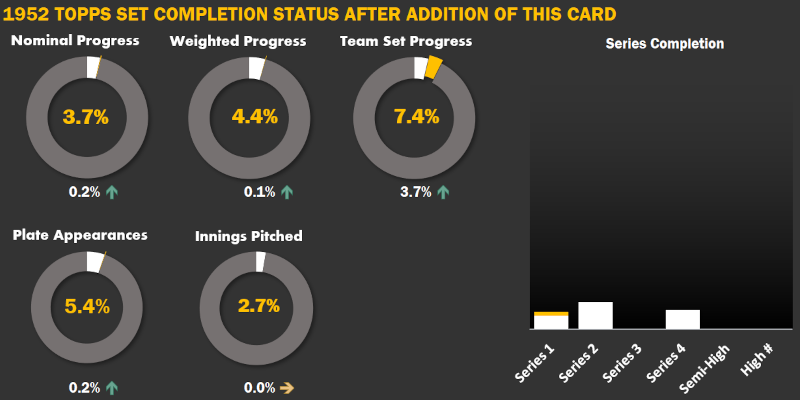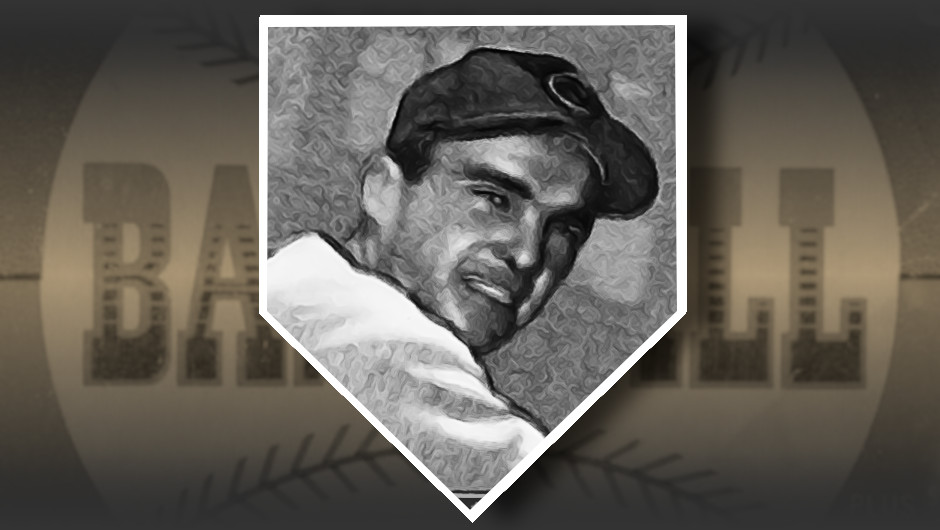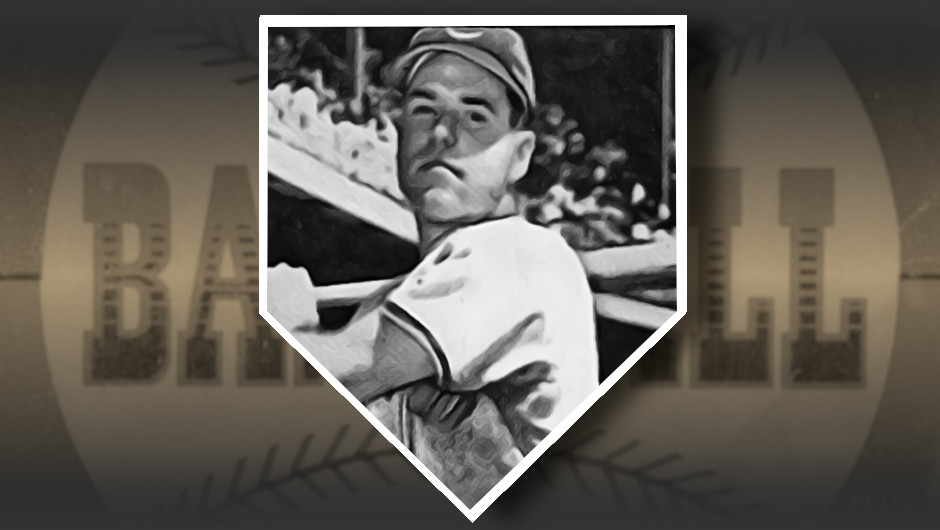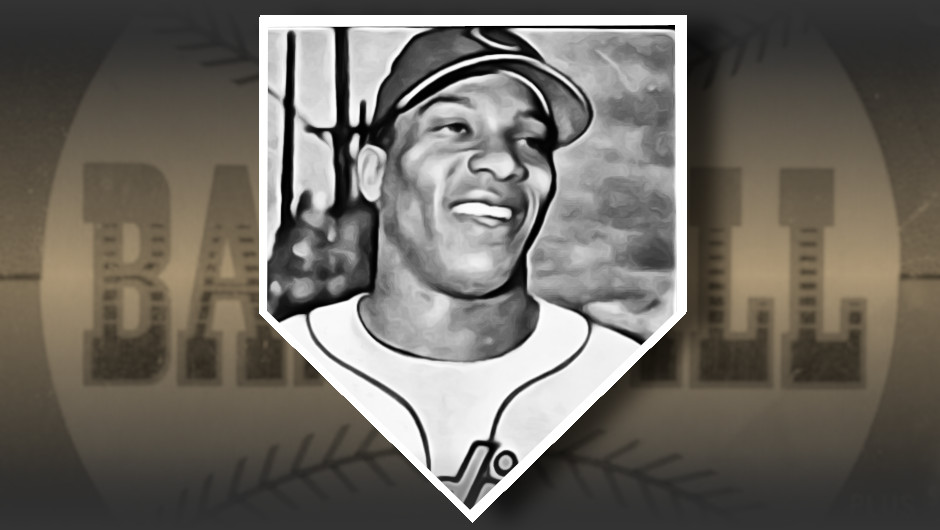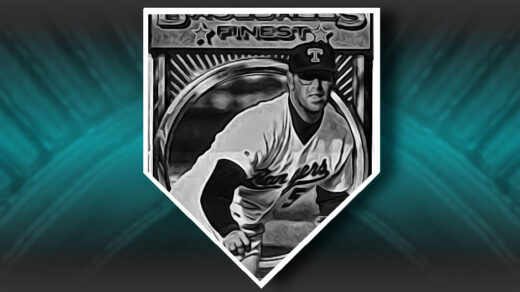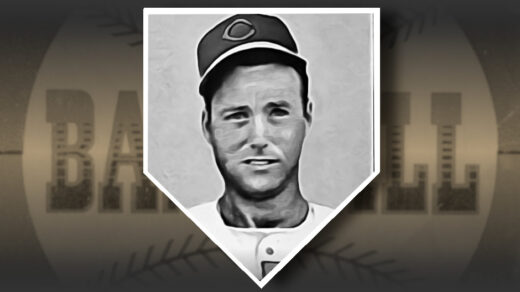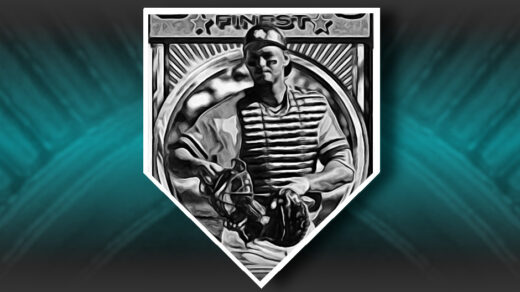The first sentence about Cleveland Indians first baseman Luke Easter on a baseball card usually discusses his immense size. His 1953 Bowman card, shown below, does just that by describing “Big Luke” as “one of the largest men in baseball.” Bending down on the front of the card, he looks like he is trying to squeeze into the frame of the picture. He even needs two bats to lean on instead of one.
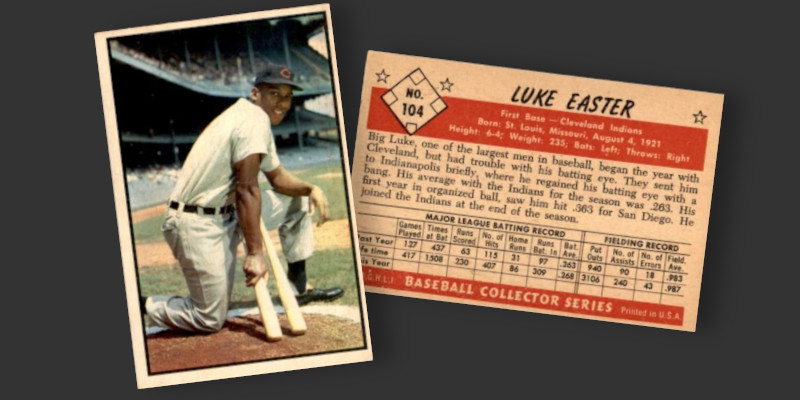
Easter’s gigantic presence (240 lbs. and nearly 6’5″) lends itself to storytelling and fans will not be disappointed by his ability to straddle the line between history and mythical legend.
Like any good story, this one begins with little more than a nondescript “a long time ago…” His birthdate was as much a guess as a fact. His 1952 Topps baseball card says he was born in 1921, but records that only belatedly appeared put the date in 1915. This wasn’t a rare occurrence, and he joins others such as Satchell Paige in the pantheon of baseball figures with mysterious origins.
Like Paige, he played much of career outside of what was then recognized as Major League Baseball. Easter tore through Puerto Rican and Venezuelan leagues, seemingly leading teams in homeruns and compiling impressive batting averages along the way. He joined the famed Negro League Homestead Grays as a replacement for the “Black Babe Ruth” Josh Gibson. If Gibson was Ruth, Easter was Gehrig – a power hitting first baseman. He would go on to become the first player to ever hit a homerun to straight center in the cavernous New York Polo Grounds. He and Mickey Mantle later became the only players to ever send pitches clear out of Cleveland’s Municipal Stadium.
Concrete details of his hitting are not as forthcoming as I would like to see, but there is no shortage of secondhand accounts of Easter hitting the longest homeruns ever seen by a friend of a friend. Stories make great legends, even those that don’t quite fit in with the ballpark. Tales of smoking epic cigars and marathon poker games are common. Easter established a sausage company to earn extra income (second jobs/business interests were very common in baseball). What makes this interesting is his reported insistence on making only two flavors: Hot and extra hot.
Legends never fade away into obscurity, they are almost always struck down by a thunderous tragedy or die in the commission of a heroic act. Easter lived up to this role as well, dying in 1979 while protecting a payroll transfer from shotgun-wielding robbers. Somehow this “ancient” ballplayer from another era ended up dying young.
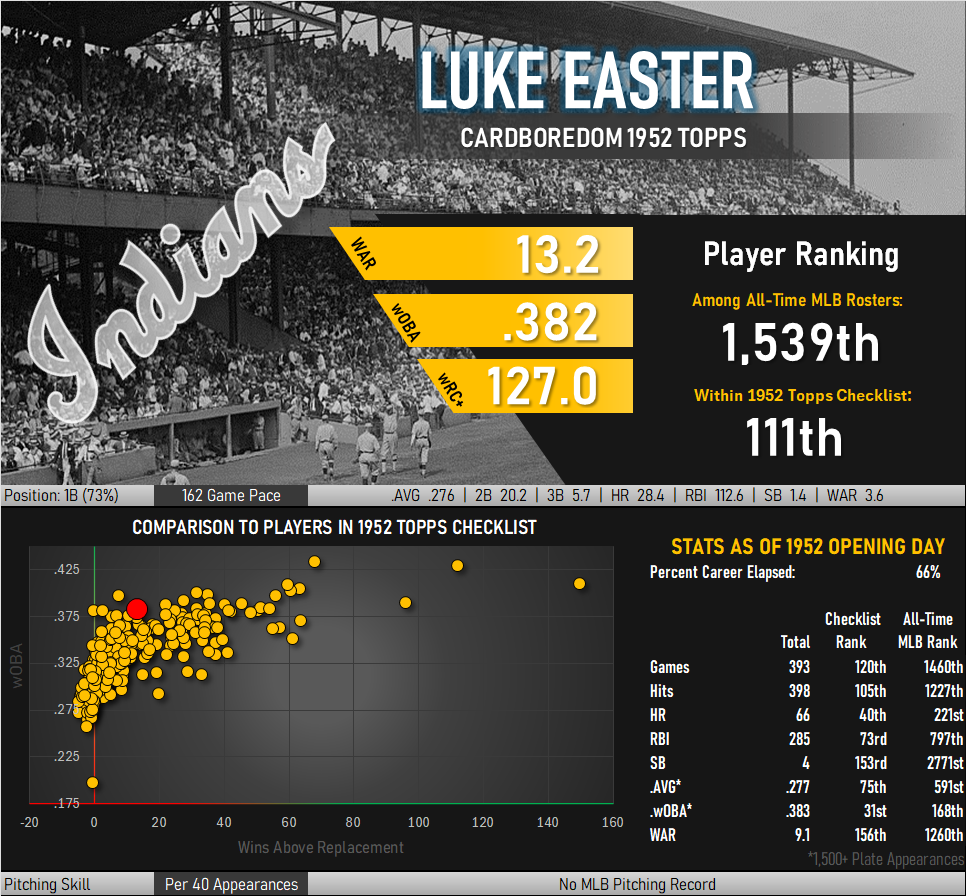
Big Luke vs. Big Hurt
Here’s an interesting comparison. Easter didn’t join the Cleveland Indians until two years after Larry Doby broke the American League color barrier. An on-field collision with Doby in 1949 limited Easter’s use of his knees and amplified the effects of serious ankle injuries suffered in a car crash nearly a decade earlier. In short, by the time the Cleveland Indians got ahold of Easter his legs had already given out. This didn’t stop him from mashing the ball. He was slotted into the relatively stationary position of first base and continued to hammer opposing pitching.
Easter’s large size, batting prowess, and defensive liabilities remind me of a legendary figure from another time. Frank Thomas was the most feared man in the American League for the first decade of his career before his legs began to slow him down. He engaged in legendary antics, famously swinging pieces of rebar in the on-deck circle and adding his name on lists of players who sent baseballs onto the surrounding streets of American League ballparks.
Below appears a comparison of Easter’s injury-riddled Cleveland stats with the final years of Frank Thomas’ career. Easter holds his own against “The Big Hurt” and manages to outshine him in several offensive categories. Easter was an amazing player.
| 162-Game Pace | PA | .AVG | HR | RBI | BB | K% | wOBA | WAR |
|---|---|---|---|---|---|---|---|---|
| Easter | 637.1 | .274 | 30.7 | 112.2 | 57.4 | 15.2% | .378 | 3.2 |
| Frank Thomas (age 35-retirement) | 667.0 | .265 | 37.6 | 108.8 | 98.9 | 16.9% | .387 | 2.9 |
Big Name for a Big Name Player
Easter is one of the earlier cards in the 1952 Topps set, appearing as #24 in the set’s first series. It identifies him as “Luke Easter” on the front, though his signature appearing below the typeset name reveals a much longer name. Turning over to the back, one can see his full name is “Lucious Luke Easter.”
